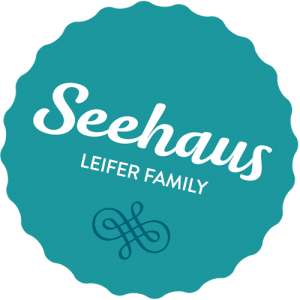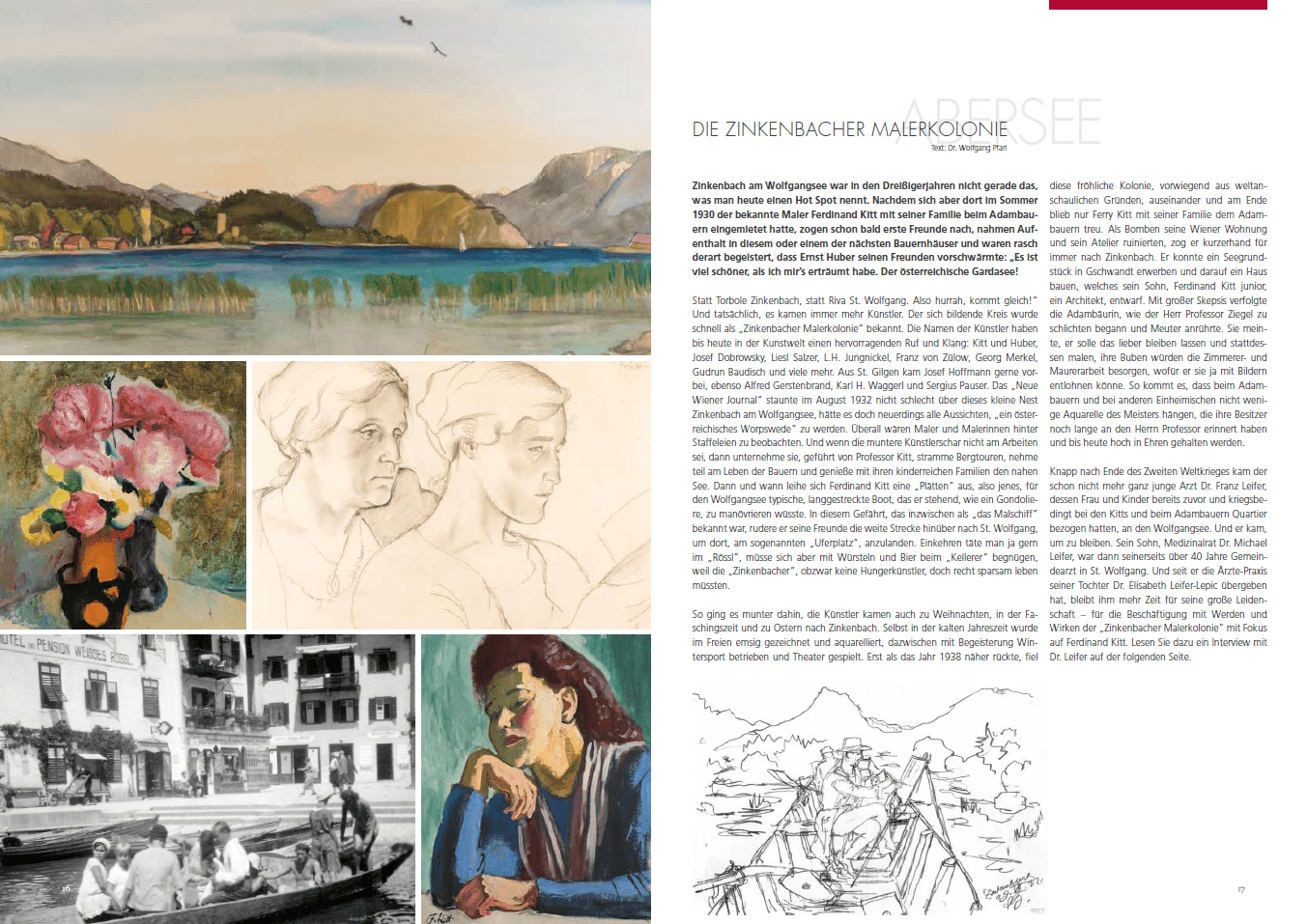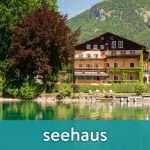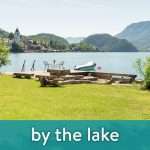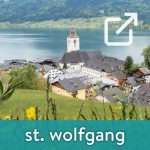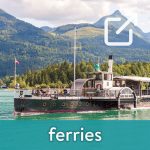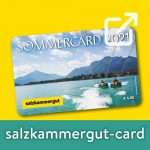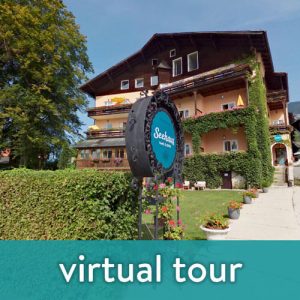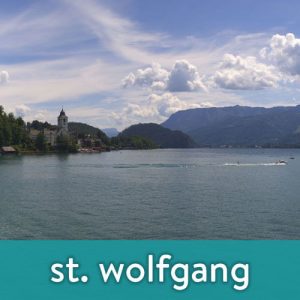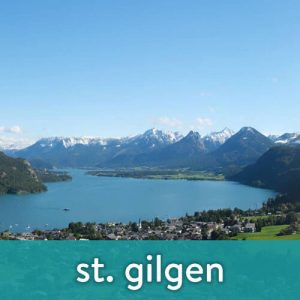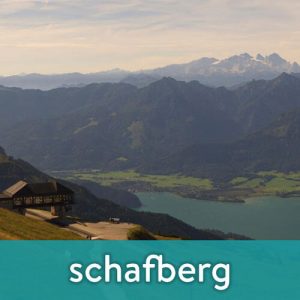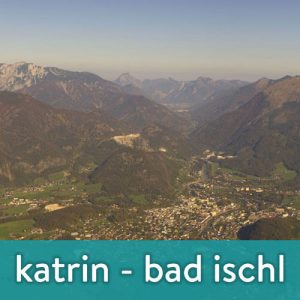
Dr. Michael Leifer was a general practitioner in St. Wolfgang for over 40 years. In terms of family history, he has a special relationship with Ferdinand Kitt and the Zinkenbach painters' colony. Maria Kitt, Ferdinand Kitt's wife, was his grandfather's sister. His father, Dr. Franz Leifer, founded the Leifer medical dynasty in St. Wolfgang. How did he experience these artistic circles as a child? A conversation with Dr. Michael Leifer.
Dr. Leifer, how exactly did the Leifer family of doctors come to settle in St. Wolfgang?
My father grew up in Styria, in Neuberg an der Mürz near Mürzzuschlag. This became a Russian occupation zone after the Second World War. And my father did not want his mother, his wife and his two children, my sisters, there. So he sent them ahead to the west of Austria, to the Salzkammergut, to St. Wolfgang. This was also a good idea because his aunt Maria and her husband, the painter Ferdinand Kitt, were already loyal long-term guests at the Adambauer. In short: his family also found accommodation at the Adambauer at that time, my father followed suit and was finally able to establish himself as a community doctor in St. Wolfgang. Later they found an apartment in St. Wolfgang - and so my family settled here. I recently handed over my medical practice, which I ran for over 40 years, to my daughter Elisabeth. Magdalena, my third daughter, now runs our adapted Salzkammergut lake villa as an apartment lake house directly on Lake Wolfgang. In general, my large family - five daughters and two sons - still has a very strong connection to St. Wolfgang to this day.
Did you meet your great-aunt Maria and her husband Ferdinand Kitt in person as a child and what was your relationship with them?
I experienced Ferdinand Kitt as a seasoned man with a self-confident demeanor. A bit of a macho, but always humorous and with a big heart. In general, my great aunt Maria Kitt's house was always open, hospitable and generous. Artists, initially painters and later increasingly musicians, came and went there. Aunt Maridi - that's what she was to us - gave my sister Monika piano lessons. We visited again and again and for me that was of course something very special.
Today you are increasingly interested in the Zinkenbach painters’ colony and Ferdinand Kitt. What particularly fascinates you about his painting style?
He had a wonderful ability to capture moods. The colors, the style - between concrete and abstract. Images that touch me. I would like to know more about which works were created at what time. Unfortunately, there are hardly any dates. And here it is exciting to do a little art history research and to be able to use my good connections to Ferdinand Kitt's circle and the Zinkenbach painters' colony.
You also collect works by Ferdinand Kitt and the Zinkenbach painters' colony with great joy and enthusiasm. Is there an opportunity for interested guests to see your collection and perhaps discuss it with you personally?
Thank you very much for the interview.
* Since the collection is currently not physically exhibited, it has now been made publicly accessible on the Seehaus Familie Leifer homepage.
Text: Dr. Wolfgang Pfarl, published in "Mein Rössl" - spring edition 2020

In the 1930s, Zinkenbach on Lake Wolfgang was not exactly what we would call a hot spot today. But after the famous painter Ferdinand Kitt and his family rented a room at the Adambauern in the summer of 1930, his first friends soon followed suit, staying in this or one of the nearby farmhouses and were quickly so enthusiastic that Ernst Huber raved to his friends: "It is much more beautiful than I ever dreamed. The Austrian Lake Garda!
Instead of Torbole Zinkenbach, instead of Riva St. Wolfgang. So hurrah, come right away!"And indeed, more and more artists came. The circle that was forming quickly became known as the "Zinkenbach painters' colony". The names of the artists still have an excellent reputation and sound in the art world today: Kitt and Huber, Josef Dobrowsky, Liesl Salzer, L.H. Jungnickel, Franz von Zülow, Georg Merkel, Gudrun Baudisch and many more. Josef Hoffmann liked to come from St. Gilgen, as did Alfred Gerstenbrand, Karl H. Waggerl and Sergius Pauser. In August 1932, the "Neue Wiener Journal" was amazed at this small village of Zinkenbach on Lake Wolfgang, as it now had every chance of becoming "an Austrian Worpswede". Painters could be seen behind easels everywhere. And when the lively group of artists is not working, they go on strenuous mountain hikes, led by Professor Kitt, take part in the life of the farmers and enjoy the nearby lake with their large families. Now and then Ferdinand Kitt borrows a "Plätten", the long boat typical of Lake Wolfgang, which he knows how to maneuver standing up like a gondolier. In this vessel, which was now known as "the painting ship", he rows his friends the long way across to St. Wolfgang, where they land at the so-called "Uferplatz". They like to stop off at the "Rössl", but have to make do with sausages and beer at the "Kellerer" because the "Zinkenbachers", although not starving artists, have to live quite frugally.
So it went on happily, the artists also came to Zinkenbach at Christmas, during Carnival and at Easter. Even in the cold season they diligently drew and painted watercolours outdoors, and in between they enthusiastically took part in winter sports and put on theatre performances. It was only as 1938 approached that this cheerful colony fell apart, mainly for ideological reasons, and in the end only Ferry Kitt and his family remained loyal to the Adambauer. When bombs ruined his Vienna apartment and his studio, he moved to Zinkenbach for good. He was able to buy a lakeside property in Gschwandt and build a house on it, which his son, Ferdinand Kitt junior, an architect, designed. The Adambauers's wife watched with great skepticism as the professor began to lay bricks and stir up trouble. She thought he should stop doing that and paint instead, her boys would do the carpentry and bricklaying work, for which he could pay them with paintings. This is why the Adambauer and other locals have quite a few of the master's watercolors hanging there, which have reminded their owners of the professor for a long time and are still held in high esteem today.
Shortly after the end of the Second World War, the no longer very young doctor Dr. Franz Leifer, whose wife and children had already moved in with the Kitts and the Adambauer due to the war, came to Lake Wolfgang. And he came to stay. His son, "Medizinalrat" Dr. Michael Leifer, was then the community doctor in St. Wolfgang for over 40 years. And since he handed over the medical practice to his daughter Dr. Elisabeth Leifer-Lepic, he has had more time for his great passion - for studying the development and work of the "Zinkenbach painters' colony" with a focus on Ferdinand Kitt.

